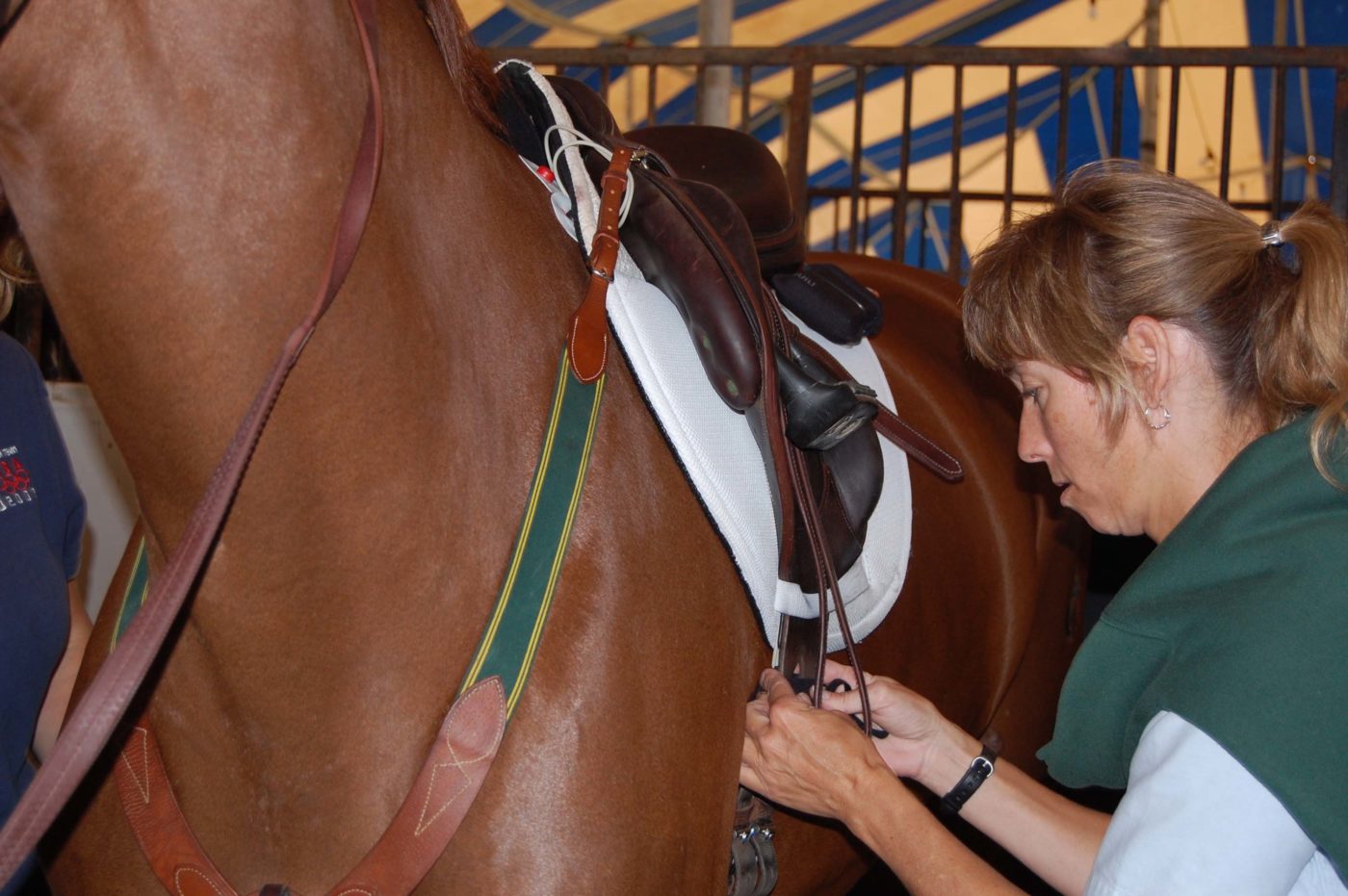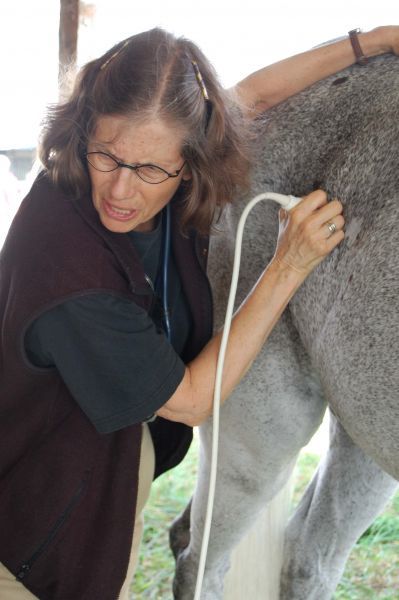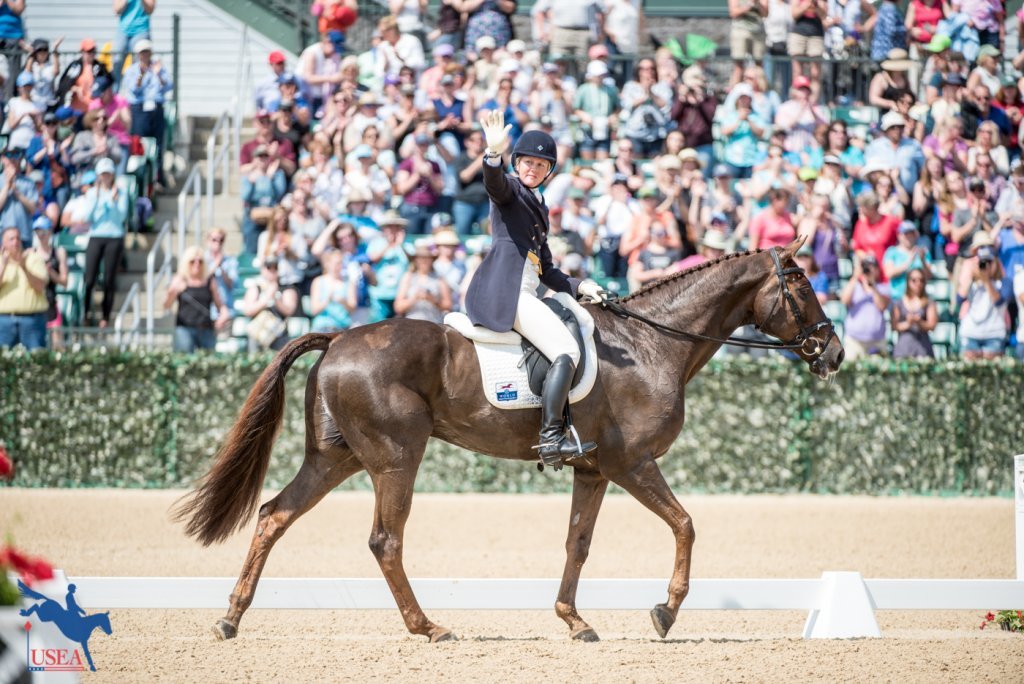Renew Your USEA Membership for the 2023 Season Today LEARN MORE

The mission of the USEA Cardiopulmonary Research Group is to study risk factors for fatality in event horses during competition, with a view to devising strategies to mitigate risk and prevent injuries and fatalities.
The recent field studies of the Group tested the hypothesis that transient and potentially performance or life-limiting heart arrhythmias, not present at rest, might occur during the intense exercise undertaken by horses competing in the cross-country phase of a horse trial or three-day event. Riders volunteered to participate in our study. We collected data using a customized, non-invasive recording system that utilizes surface electrodes and an on-board recording device. We fitted each horse with our recording system prior to the cross-country warm up, and removed the system when the horse returned to its home base. Additional historical information is available in the April 2015 update.
We have now collected recordings of the electrical activity of the heart from 124 horses competing in a cross-country test. We have performed a preliminary review of all recordings and we are now working on in-depth evaluations of each horse’s record.
We collected our data from horses competing at all levels (Beginner Novice to CCI3*, CIC3* and Advanced) in both FEI and USEF competitions in Pennsylvania, Maryland, New Jersey, Georgia and California. Sixty percent (75) of 124 recordings are of sufficiently high quality to be interpretable,15 are borderline and 34 are not interpretable. Thirty-nine of the interpretable recordings (52%) are from horses competing in Training, Novice and Beginner Novice classes, while 48% are from horses competing at Preliminary or higher levels.
Our initial review did not reveal cardiac arrhythmias that would impair the safety of horses in competition. We have identified, in several horses, arrhythmias that are not considered a threat to safety and for which the clinical significance (impact on performance) is not known at this time. Our in-depth evaluations may lead to revision of these assessments.
What can you do to help prevent injuries and fatalities?
We recommend that your veterinarian carefully listen to your horse’s heart prior to your first competition. If the horse’s heart rhythm is normal, and there are no heart murmurs, schedule annual reevaluations to insure that heart function continues to be normal. If your veterinarian detects an abnormality in heart rhythm or a heart murmur, your horse should be evaluated by a veterinary specialist with experience and advanced training in equine cardiology. This evaluation should include assessment of an electrocardiogram (ECG, a recording of heart electrical activity) and an echocardiogram (sonographic image of the heart). In some cases, a stress test might be necessary to evaluate your horse’s heart function during exercise. The goal of these examinations is to be as certain as possible that your horse is not at risk for having performance or life-limiting reductions in cardiac function while competing. In other words, we want to help you to prevent high-risk horses from competing.

Dr. Catherine Kohn working at the first Cardiopulmonary study in 2009. USEA/Leslie Mintz Photo.
Why do horses die while competing?
A crucially important aspect of our studies is collection of post mortem evaluations (necropsies) of all horses that die during competition or within the week following competing. The importance of obtaining necropsies cannot be overstated. So far, we have learned that extensive pulmonary hemorrhage (blood in the lungs) and abdominal bleeding (due to rupture of a large blood vessel) were present in a number of these fatalities. We want to examine tissue samples from lungs, heart and blood vessels to look for a cause for these hemorrhagic events. Traumatic orthopedic, soft tissue, and brain injuries have also been documented.
We understand the emotional impact of the loss of an equine athlete, and we appreciate that making a decision to allow post mortem examination may be very difficult. Each horse that dies during or shortly after competing, has an opportunity to make a contribution to our understanding of such events. Fortunately, fatalities occur infrequently, but this means that our knowledge of cause of death does not progress rapidly, and it is therefore essential that we learn as much as possible from each horse that dies. We encourage trainers, riders and owners to agree to a necropsy for any horse that dies during competition or within seven days of competing.
To ensure that the tissues are well preserved, a deceased horse should be moved to a cold storage facility as quickly as possible, and the necropsy should be performed within six to 12 hours after death. The quality of the necropsy declines quickly as the time between death and necropsy increases.
The USEA and the USEF support this effort and will help to coordinate obtaining the necropsy. The Cardiopulmonary Research Group has drafted a necropsy protocol that is provided to the pathologist examining each horse, and we request tissue samples from each case to bank for future studies.
An Example of Risk Reduction

Allison Springer and Arthur. USEA/Leslie Mintz Photo.
At the 2017 Rolex Kentucky CCI4*, Allison Springer retired her very talented, long-term equine partner, Arthur. Arthur was originally entered in the CCI4*. During a routine pre-competition examination, Arthur’s veterinarian found a concerning heart arrhythmia and referred the horse to a cardiac specialist. Echocardiography and analysis of the horse’s ECG (heart electrical activity) did not reveal abnormalities; however, Arthur was “four-star fit” and the specialist said that Arthur should undertake a challenging stress test to insure that his cardiac function was normal at a high heart rate similar to rates he would achieve while competing. This test showed that Arthur did indeed have a heart arrhythmia that would have put him at risk in competition. Springer withdrew Arthur and said that she would never willingly risk his well-being. The Cardiopulmonary Research Group encourages all competitors to follow Springer’s example by monitoring their horses’ heart health and by making the right decision if a serious risk is identified.
To learn more about how you can contribute to the USEA Cardiopulmonary Research Study as a participant or donor, please visit www.useafoundation.org/projects.